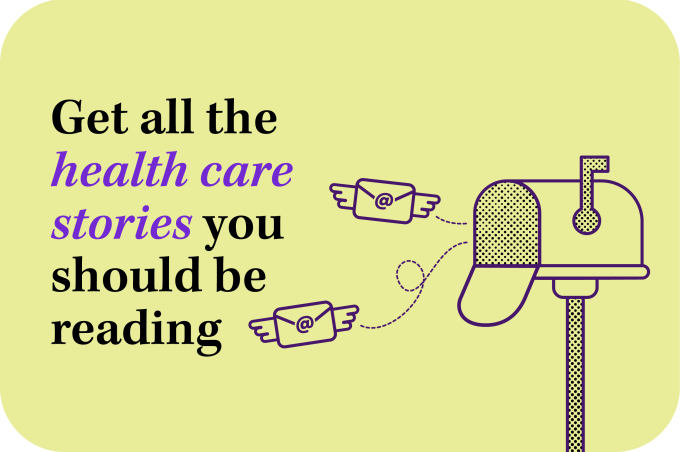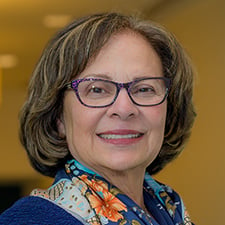There are some 9.7 million Indigenous people in the U.S. This might not seem like a sizable number compared with the total U.S. population of roughly 335 million—in fact, it’s only about 3%—“but if you're part of my family, it is 100% of your existence,” said LeeAnna Muzquiz, MD, who represents the Association of American Indian Physicians on the AMA Minority Affairs Section Governing Council.
For Indigenous people to be able to live full, happy, healthy lives, the physicians who care for them have to account for this experience, Dr. Muzquiz said. She added that no matter how much of the population anyone’s racial or ethnic group makes up, the same may be true: It may be “100% of their world.”
An education session at the 2024 AMA Interim Meeting featured a presentation by Dr. Muzquiz covering some of the challenges of Indigenous health care—specifically, how historical medical mistreatment of American Indians and Alaska Natives has engendered fear and suspicion of physicians, other health professionals and health care organizations. She also described how cultural humility can foster better patient-physician relationships.
Native Americans are not a monolith
There are all of 574 federally recognized tribes in the U.S. and “upwards of 400 other tribes that are not federally recognized,” Dr. Muzquiz noted during the session, which was jointly hosted by the AMA Minority Affairs Section and the AMA LGBTQ+ Section.
So while an Indigenous person might identify with a particular tribe, the federal government might not acknowledge it.
“Much of what I'm talking about today centers to some degree on the federal recognition, but please also know that there are plenty of other Indigenous people throughout our country that you may come across who do not enjoy that designation,” she said.
Dr. Muzquiz is an enrolled member of the Confederated Salish and Kootenai Tribes of Montana—one of those that is federally recognized. She has served her tribal community as a family physician for more than 20 years and also is associate dean for admissions at the University of Washington School of Medicine.
"When people think about Indigenous people, they might think about people like me, who grew up on a reservation, who live on a reservation, who are in this isolated, perhaps rural community. But the actual reality of it is that the majority of Native American-identified people in this country do not live on reservations—they live in urban communities,” she said. “So the likelihood is pretty high that you’ll come into contact with them on a regular basis, particularly in your practice of medicine.”
How it plays out in the exam room
Native Americans carry with them a lot of historic trauma, which presents challenges for their physicians and health care teams, Dr. Muzquiz said.
“Imagine a complete dismantling of your entire social system … because then it becomes about survival, and you're in that fight-or-flight mode,” Dr. Muzquiz said. “How, then, will you be able to take care of yourself—and take care of others—in the context of not understanding the rules anymore and not understanding how to even survive?”
That's the notion of historical trauma, she said.
“You can imagine when people are coming to seek health care, they carry this with them. But is this something you say on your intake visit when you're first meeting your doctor? Probably not,” she said.
Ask, don’t tell
“So what do we do? How do we address this?” Dr. Muzquiz asked, adding that the notion of being culturally competent puts her on edge.
“I’m not even culturally competent in my own culture,” she said, yet added that there is something to be said for cultural sensitivity and cultural safety.
“It's important to have a recognition, if you are coming to a community and you want to be of service, that you have an understanding of what the community needs are,” she said, because “your impression of what they may need may not be the same as what they feel like they need.”
The real issue, she said, is what it means to be traditional, adding that every tribal community has its own unique culture. “Asking tribal members—and having them help design health care systems—that’s what really has worked in the past.”
The education session also featured a presentation by Judith Flores, MD, the National Hispanic Medical Association’s representative on the AMA Minority Affairs Section Governing Council. She detailed her work with the New York City Department of Public Health’s campaign to increase flu vaccinations in Hispanic and Black communities.
She too voiced hesitancy about the notion of cultural competency. Dr. Flores suggested a different concept: cultural responsiveness.
“You cannot be culturally competent with every group. I've taken care of people from 15 different backgrounds in New York … there's no way I can be competent with them all,” Dr. Flores said. “But I can be responsive. I can't talk to them. I can listen to them. I can find out where they are and what they need to be able to get the best treatment.”
Learn more with this recent Leadership Viewpoints column by AMA President Bruce A. Scott, MD, on creating a healthier future for Native communities.
Workforce is an answer too
Over the long term, the answer to delivering better care for Indigenous patients is capacity building within the community, Dr. Muzquiz said.
“Wouldn't it be nice if, actually, the people serving the community were of the community, were from the community?” she said.
American Indians and Alaska Natives make up less than 1% of U.S. medical school applicants, she noted in a 2023 AMA profile of her work.
“We need to train more folks from these communities to serve,” she said. “That’s going to build the trust factor.”





